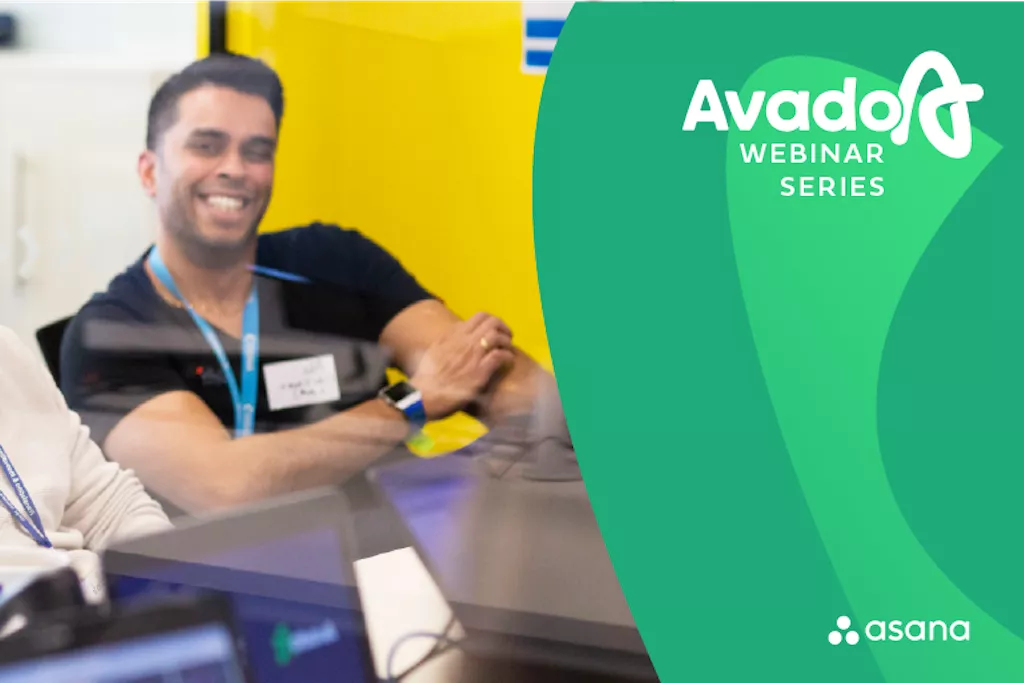HR training, delivered seamlessly online for busy professionals
Earlier this week, we kicked off our latest webinar series, Unlocking Agility, with the first episode, Organisational agility: Agile for the non-agile team. Hosted by our Head of Client and Market Insight, Owen Smith, our panel of experts included Michelle Balabon, the Director of Global Commercial Digital & Innovation at AstraZeneca; Shammy Khan, Head of Customer Success EMEA at Asana; and Jenny Baynes, Smart Working Business Change Lead at Cabinet Office.
Owen started the conversation by discussing our own journey towards agility here at Avado. “We’re trying to work out what being agile means for us,” he said. “We’ve seen tech teams do it, seen other teams do it, and come to the realisation that just renaming things doesn’t work.” He then asked the panelists to explain how they define agility. Shammy said, in Asana’s case, it’s about “giving our teams the flexibility work in their preferred methods, which helps drive innovation and creativity.” Jenny agreed, and added that the Civil Service has focused on developing resilience so they can help their teams adapt through turbulence.
Michelle discussed the boot camp the leadership team at AstraZeneca went through with Avado, which helped change the organisation’s mindset. “It’s an exciting time at AstraZeneca,” she said. “We’ve had to speed things up, and we have a new motto: learning for life at AstraZeneca. More people are going into the modules and taking the workshops because it is a new way of working that’s here to stay.”
The webinar, which was hosted in partnership with Asana, went on to cover a variety of topics including:
- There’s more than one way to be agile
- A first step to helping everyone be clear on ‘why’ is finding a driver that is more sustainable than a crisis
- Develop a common language and expectation around agility
- Show people relevant examples from within your organisation
- Leaders and managers can start by listening to their teams
- Collaboration underpins agility
Watch the entire episode below.
To follow up on the webinar, we asked our Chief Technology Officer, Mike Fenna, to describe how he defines agile, with a little a. He said, “I like to describe agile as the solution to what are a common set of business problems:
- Investing heavily in projects which don’t deliver the benefits that were expected
- Running projects over long time frames – by the time they deliver, the business (or market) has moved on
- Struggling to keep products up to date – instead making big updates on an infrequent basis, leading to a lack of ‘recency’
- A lack of transparency from teams across the company – people aren’t sure what teams are doing, and can’t understand why their priorities aren’t being delivered quicker
- Prioritisation of teams’ work – ‘they who shout loudest get their priorities done’”
Mike added, “For me, ensuring a focus on agility is about leadership, sponsorship and having a clear vision of where you want your team or business to get to – If people understand the bigger picture, and how agile can help you get there, they will be much more invested in making it work.”
If you enjoyed the first episode, register for the next episode in our Unlocking Agility series, Connecting teams: Collaboration is the foundation of agility. Taking place on Wednesday, February 17 at 1 p.m. GMT, the second episode will cover improving cross-functional learning, the role leaders play in promoting collaboration, creative ways to overcome roadblocks, and real business examples of cross-team collaboration.
For even more info on organisational agility, read our latest report, Why your organisation’s success depends on your approach to learning. From finding the right kind of agile learning to proving the relationship between learning and organisational change, this report offers up invaluable insights to support your organisation’s next steps towards agility.
About Avado
For more than 20 years, Avado have been providing professional training and qualifications that transform businesses. If you see a gap in your own organisational agility, find out how our Agility Academy can help.
 4 min read
4 min read 



